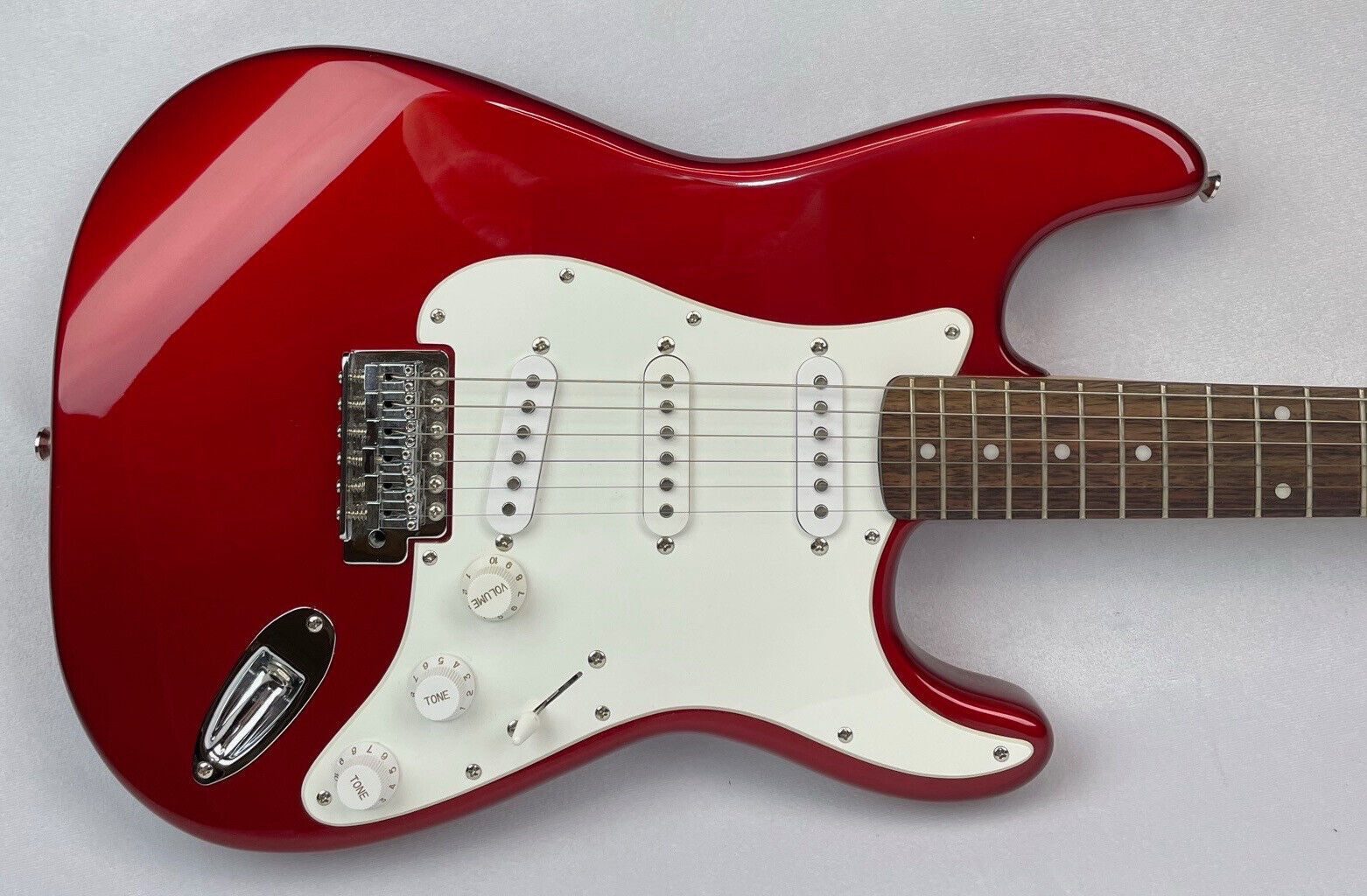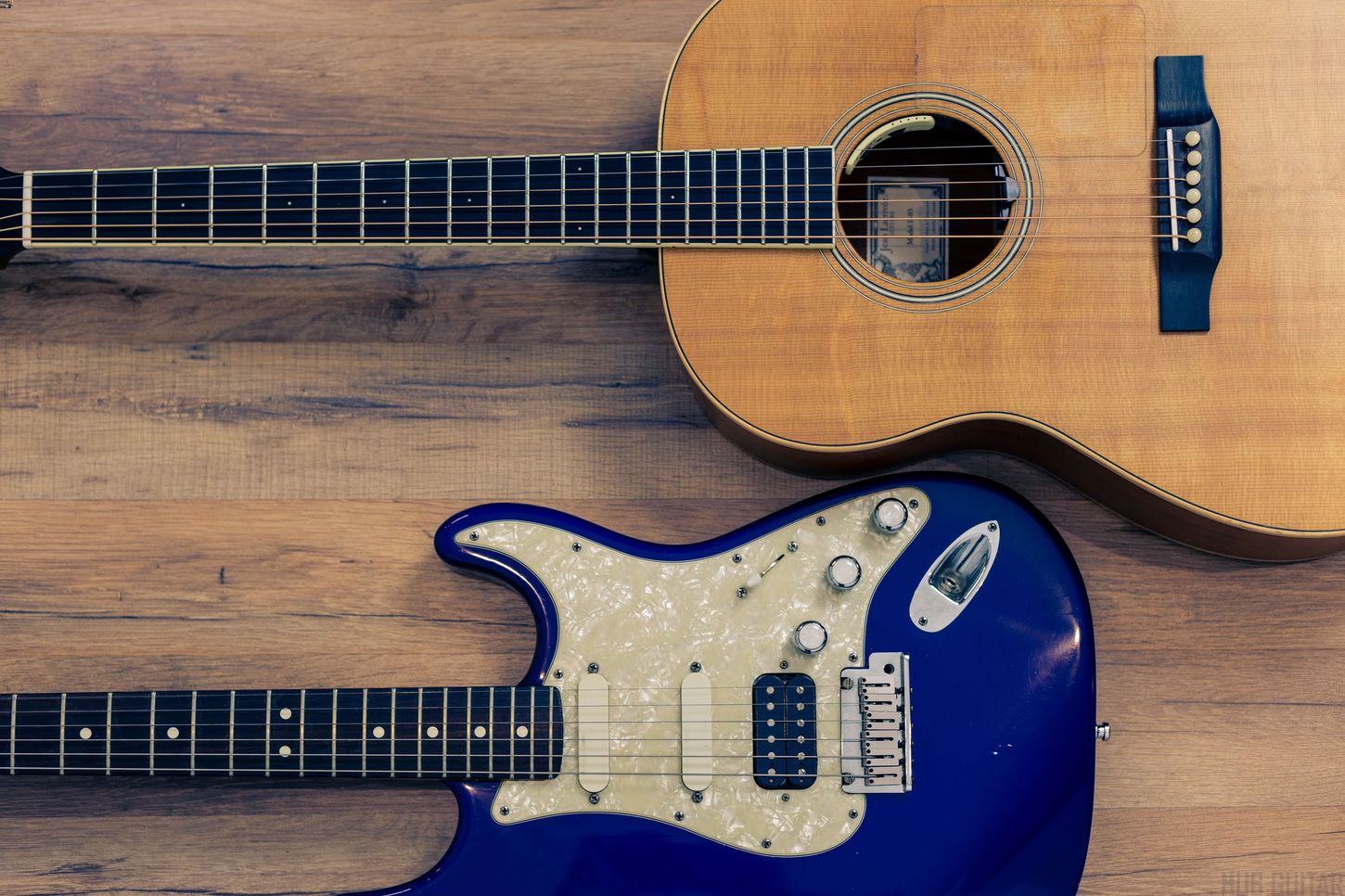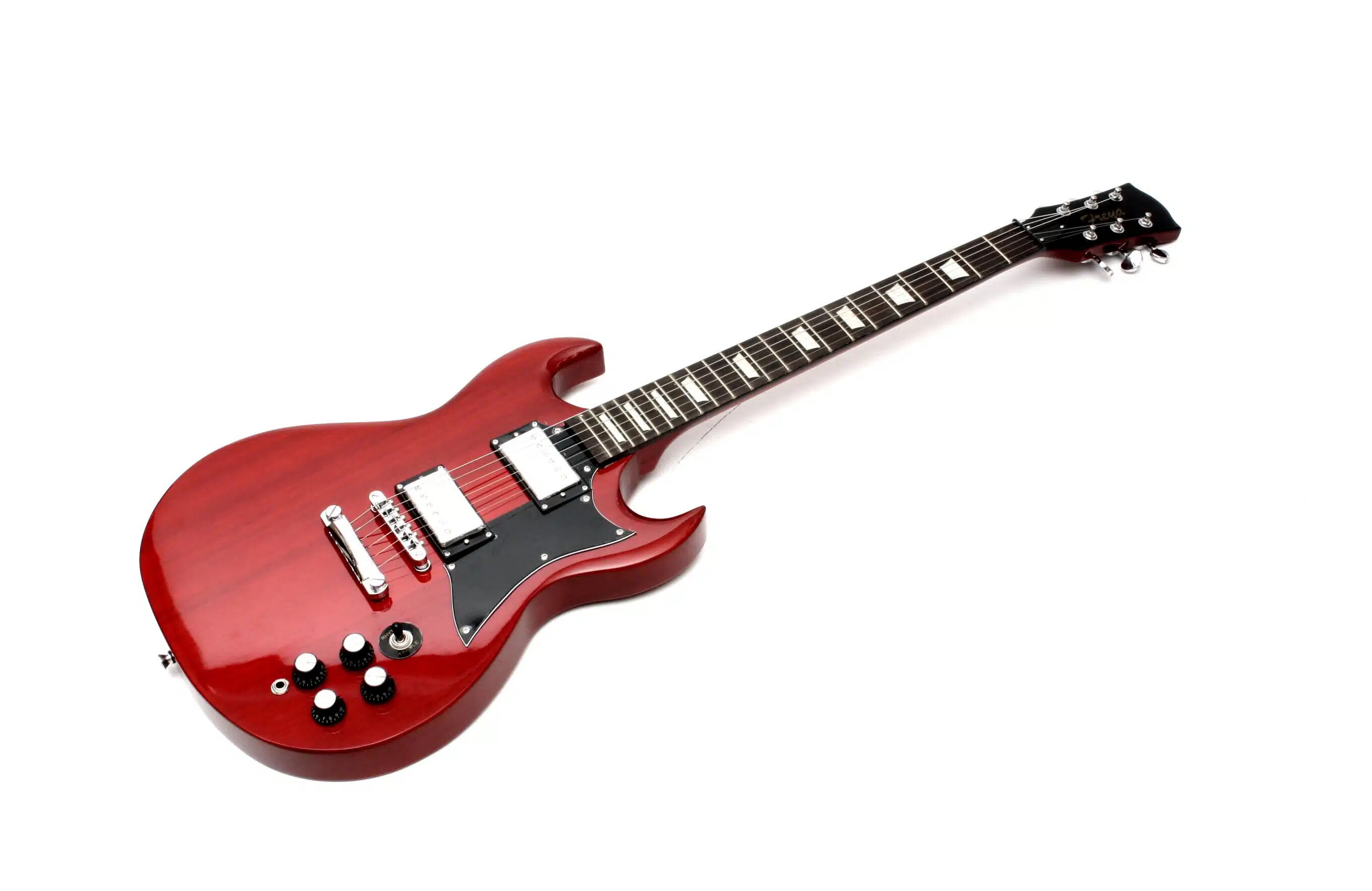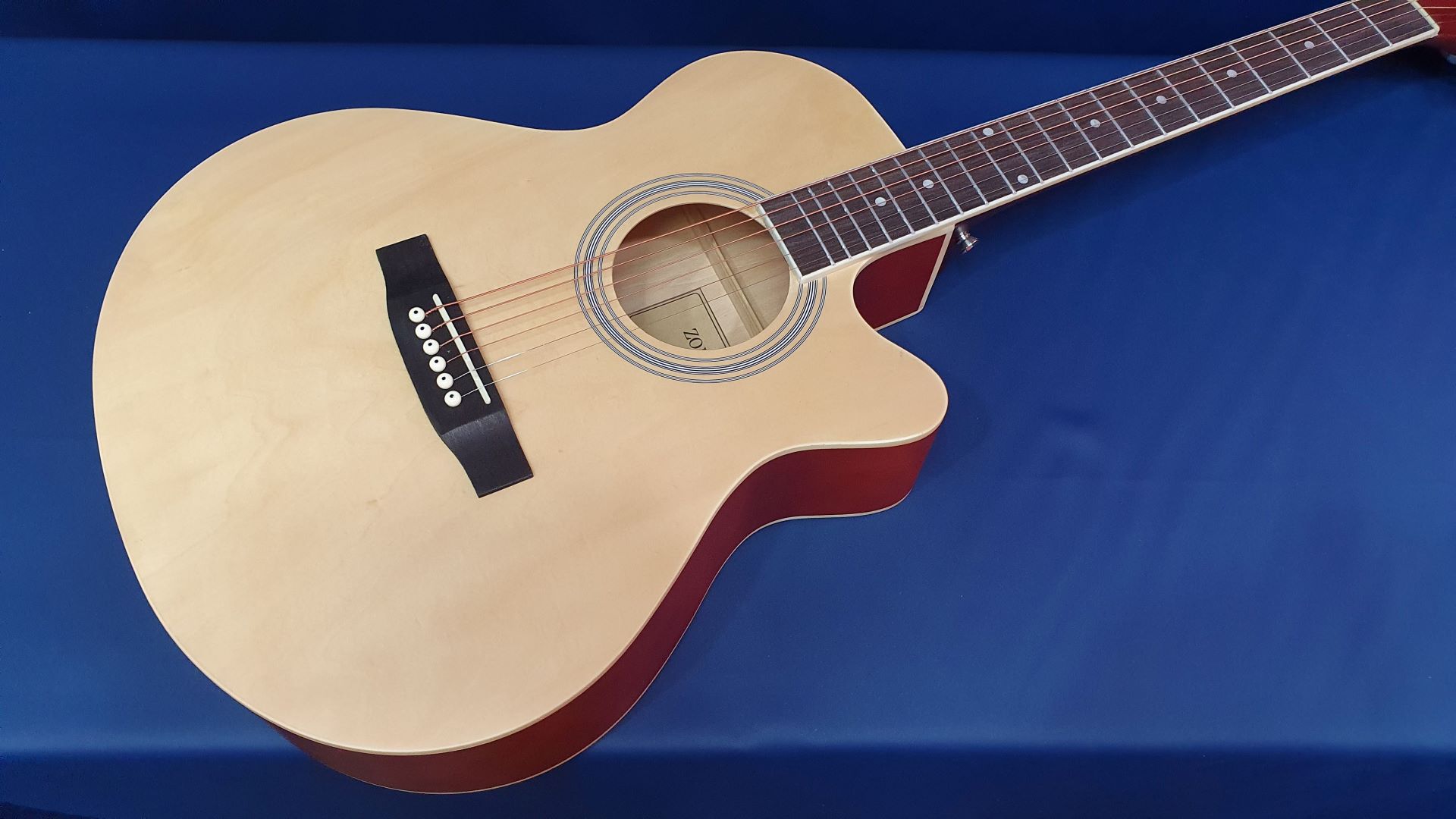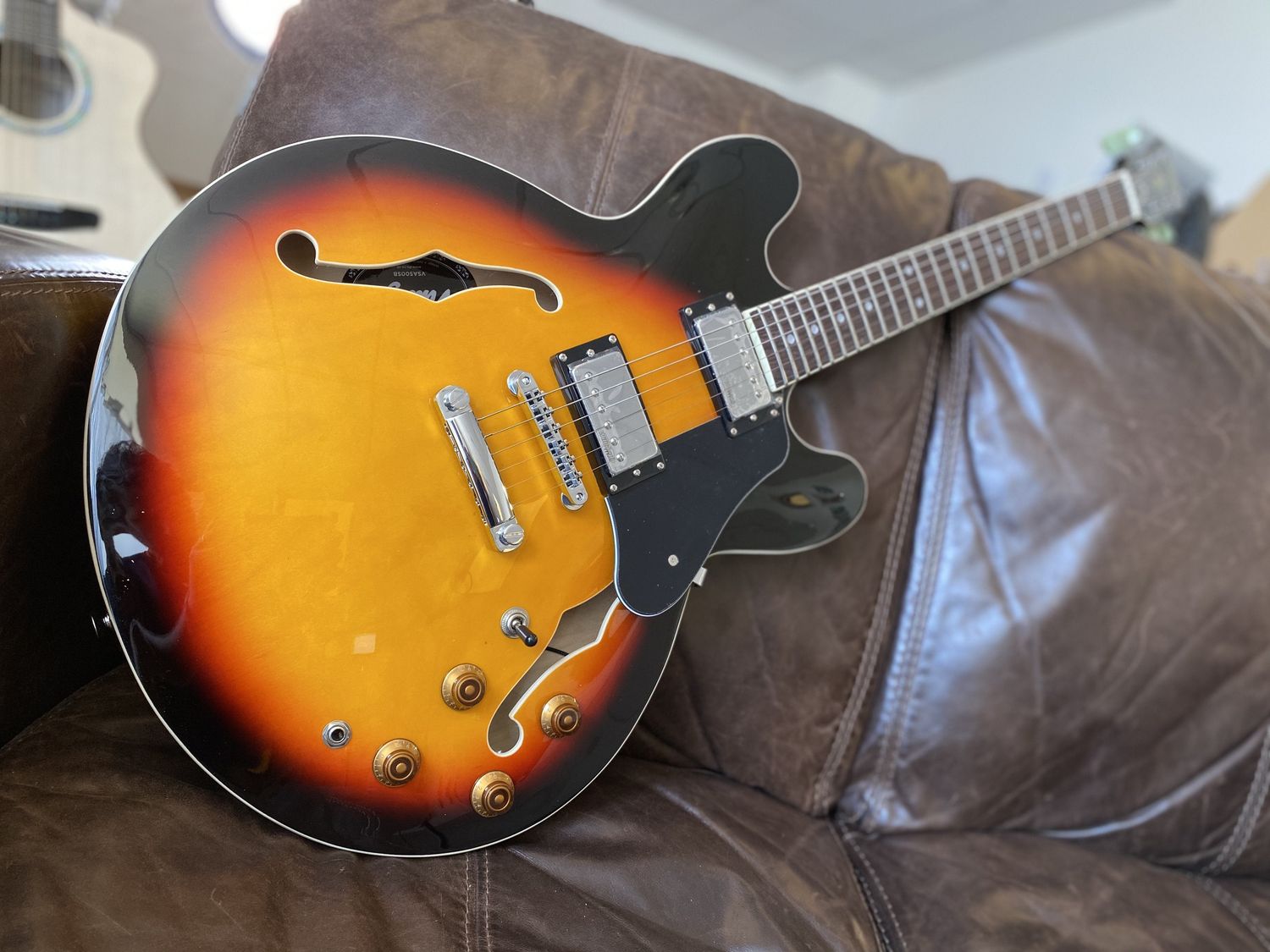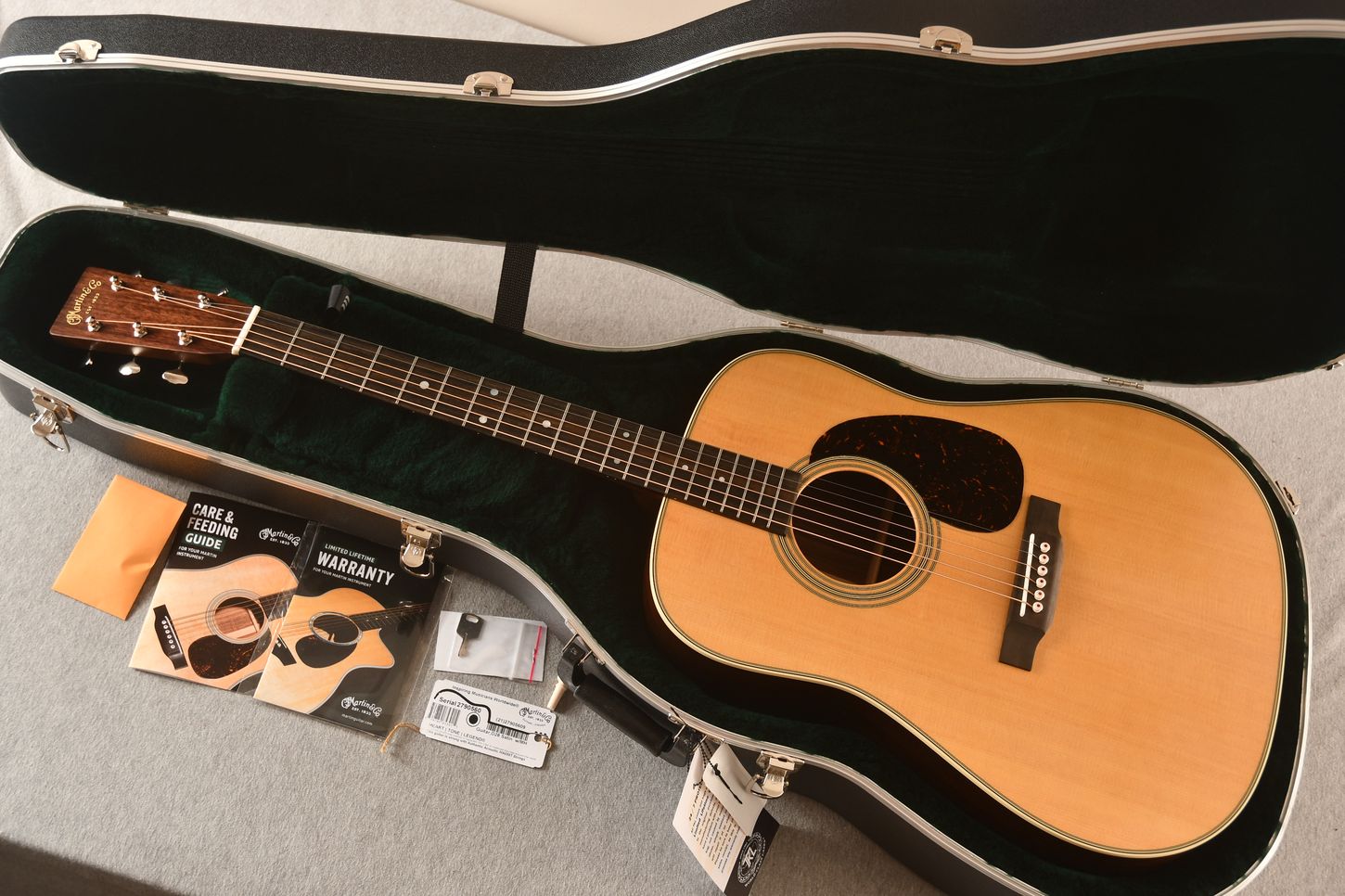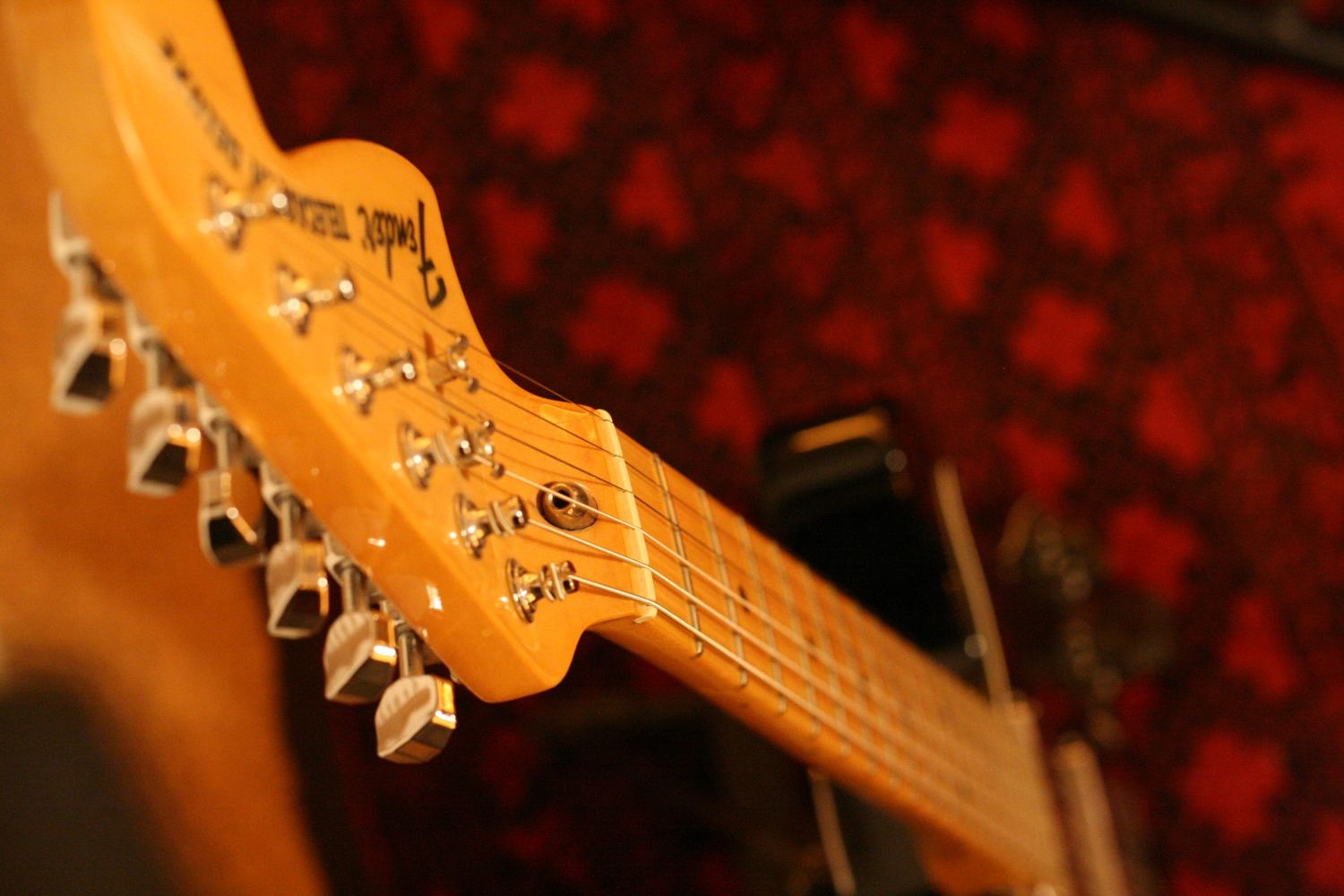Home>Instruments>Guitar>What Is An Acoustic Electric Guitar
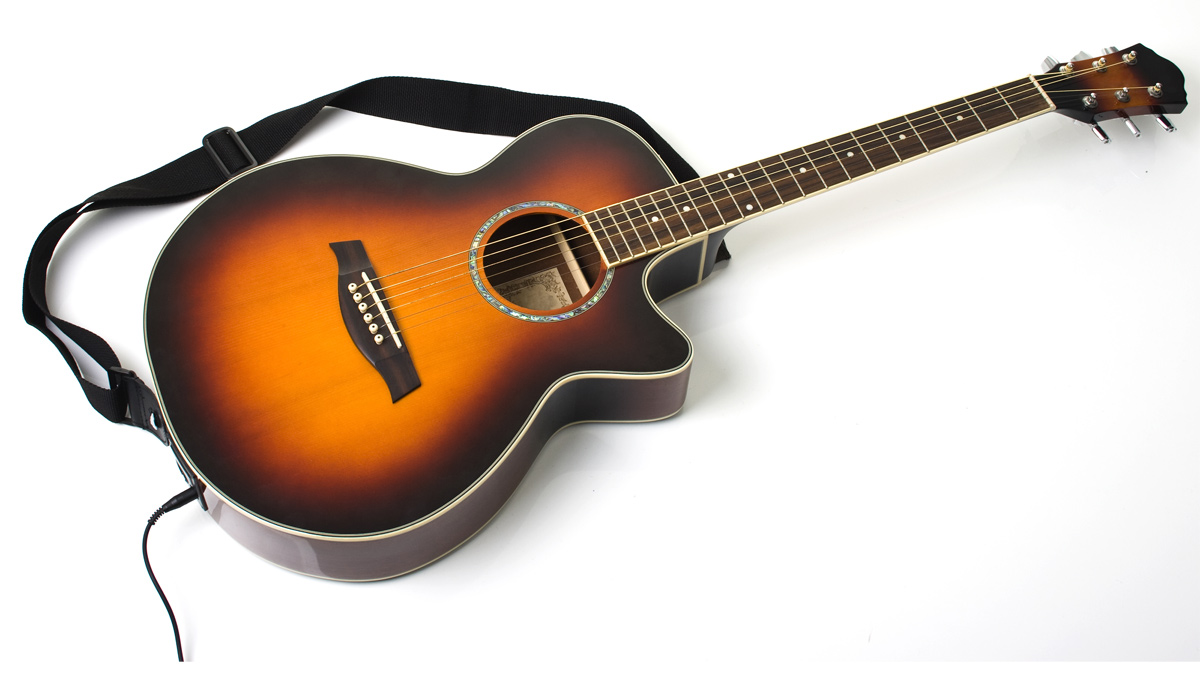

Guitar
What Is An Acoustic Electric Guitar
Modified: March 12, 2024
Discover the versatility of acoustic electric guitars and how they blend the best of both acoustic and electric guitar worlds. Learn about their unique features and benefits.
(Many of the links in this article redirect to a specific reviewed product. Your purchase of these products through affiliate links helps to generate commission for AudioLover.com, at no extra cost. Learn more)
Table of Contents
Introduction
The mesmerizing sound of a guitar has the power to captivate audiences and stir emotions. Whether strummed gently or played with fiery passion, the guitar's versatility makes it a beloved instrument in various musical genres. Among the myriad of guitar types, the acoustic electric guitar stands out as a unique and innovative creation that seamlessly blends the rich, resonant tones of an acoustic guitar with the amplified capabilities of an electric guitar.
The acoustic electric guitar represents a harmonious marriage of traditional craftsmanship and modern technology, offering musicians the best of both worlds. Its ability to produce natural acoustic sounds while also being compatible with amplification systems makes it a versatile and practical choice for performers across different musical styles.
In this comprehensive guide, we will delve into the intricacies of acoustic electric guitars, exploring their design, functionality, and the distinct advantages they offer to musicians. By the end of this article, you will have gained a deep understanding of what sets acoustic electric guitars apart from their acoustic and electric counterparts, as well as insight into the most popular models that have earned acclaim from professionals and enthusiasts alike.
Join us on a journey through the world of acoustic electric guitars, where tradition meets innovation, and where the timeless beauty of acoustic resonance converges with the electrifying possibilities of modern amplification. Whether you are a seasoned guitarist, an aspiring musician, or simply an admirer of musical craftsmanship, this exploration will illuminate the captivating allure of the acoustic electric guitar and its enduring impact on the world of music.
Definition of an Acoustic Electric Guitar
An acoustic electric guitar, often referred to as an electro-acoustic guitar, is a versatile musical instrument that combines the acoustic properties of a traditional acoustic guitar with the option of electric amplification. This hybrid design allows the instrument to produce natural acoustic sound when played unplugged, while also enabling it to be connected to amplifiers or sound systems for enhanced volume and projection.
At its core, an acoustic electric guitar shares the same fundamental construction as an acoustic guitar, featuring a hollow body, sound hole, and a resonant soundboard. However, it is equipped with built-in electronics, such as pickups and preamps, which facilitate the conversion of string vibrations into electrical signals. These signals can then be amplified and manipulated to achieve a broader range of tonal possibilities, making the acoustic electric guitar a versatile tool for live performances, studio recordings, and various musical settings.
Unlike purely acoustic guitars, which rely solely on the natural acoustics of their hollow bodies to produce sound, acoustic electric guitars offer the added flexibility of being heard at higher volumes without sacrificing tonal quality. This feature makes them highly adaptable for performances in larger venues, outdoor settings, and band ensembles, where projection and clarity are essential.
Furthermore, acoustic electric guitars often include onboard controls for adjusting volume, tone, and equalization, empowering musicians to tailor their sound to suit different musical styles and performance requirements. This blend of acoustic resonance and electric amplification capabilities distinguishes acoustic electric guitars as a versatile and practical choice for musicians seeking a balanced combination of traditional warmth and modern functionality.
How an Acoustic Electric Guitar Works
Understanding the inner workings of an acoustic electric guitar unveils the seamless integration of acoustic and electric elements that define its unique sonic capabilities. At its essence, the acoustic electric guitar operates on the principles of transducing acoustic energy into electrical signals, which can then be amplified and manipulated to produce amplified sound.
The primary components that enable an acoustic electric guitar to function as both an acoustic and electric instrument include pickups and preamps. Pickups, typically located under the guitar’s bridge or within its body, are the key components responsible for converting the vibrations of the strings into electrical signals. These signals are then transmitted to the preamp, a built-in electronic component that processes and conditions the signals before sending them to an amplifier or sound system.
There are several types of pickups commonly used in acoustic electric guitars, each offering distinct tonal characteristics and installation methods. Piezoelectric pickups, for instance, utilize the piezoelectric effect to convert string vibrations into electrical signals, capturing the natural acoustic resonance of the guitar. Another popular type is the magnetic soundhole pickup, which employs magnetic sensors to capture the strings’ vibrations and produce a warm, electric guitar-like tone.
Once the pickups have converted the string vibrations into electrical signals, these signals are routed to the preamp, which serves as a control center for shaping the guitar’s amplified sound. The preamp allows musicians to adjust the volume, tone, and equalization of the guitar’s output, providing flexibility in tailoring the sound to suit different playing styles and performance environments.
When the electrical signals are ready for amplification, they are sent to an external amplifier or sound system, where they are boosted in volume and projected through speakers. This process allows the natural acoustic sound of the guitar to be heard at higher volumes, making it suitable for live performances, recording sessions, and collaborative musical endeavors.
By seamlessly blending acoustic resonance with electric amplification, the acoustic electric guitar offers musicians a versatile and expressive instrument that adapts to diverse musical contexts, from intimate acoustic settings to dynamic amplified performances.
Differences Between Acoustic and Acoustic Electric Guitars
While acoustic and acoustic electric guitars share similarities in their basic construction and playability, there are notable distinctions that set them apart in terms of sound production, amplification capabilities, and overall functionality.
- Sound Production: The primary difference between acoustic and acoustic electric guitars lies in their methods of sound production. Acoustic guitars rely solely on the resonance of their hollow bodies and soundboards to amplify the vibrations of the strings, producing a natural, unamplified acoustic sound. In contrast, acoustic electric guitars incorporate built-in pickups and electronics, allowing them to produce both acoustic sound when unplugged and electrically amplified sound when connected to an amplifier or sound system.
- Amplification Capabilities: Acoustic guitars are inherently limited in their volume and projection, as their acoustic sound is dependent on the natural acoustics of the instrument. On the other hand, acoustic electric guitars offer the flexibility of being amplified, making them suitable for performances in larger venues, band settings, and situations where increased volume and projection are essential.
- Versatility: Acoustic electric guitars provide greater versatility in terms of tonal options and performance settings. With onboard preamps and tone controls, musicians can adjust the guitar’s amplified sound to suit different musical styles and playing environments. This adaptability makes acoustic electric guitars well-suited for a wide range of genres, from folk and rock to jazz and country.
- Playability: In terms of playability, acoustic electric guitars generally offer a similar experience to acoustic guitars when played unplugged. However, the inclusion of electronics and controls may slightly alter the instrument’s weight and balance, as well as the tactile feel of the guitar’s body. Additionally, the presence of pickups and preamps may necessitate occasional maintenance and adjustments to ensure optimal performance.
Ultimately, the decision between an acoustic and acoustic electric guitar depends on the individual musician’s preferences, playing style, and performance needs. While acoustic guitars excel in intimate acoustic settings and unplugged performances, acoustic electric guitars cater to musicians seeking the added versatility of amplification and tonal customization, making them a valuable tool for live performances, studio recordings, and collaborative musical endeavors.
Pros and Cons of Acoustic Electric Guitars
Acoustic electric guitars offer a unique blend of acoustic warmth and electric versatility, presenting musicians with a range of advantages and considerations that shape their appeal and practicality in various musical contexts.
Pros:
- Versatility: One of the key advantages of acoustic electric guitars is their versatility. They can seamlessly transition from intimate, unplugged performances to amplified settings, offering musicians the flexibility to adapt to diverse performance environments and musical styles.
- Amplification Capabilities: The ability to be connected to amplifiers and sound systems enables acoustic electric guitars to achieve higher volumes and projection, making them suitable for live performances, band settings, and collaborative musical endeavors where amplified sound is essential.
- Tonal Customization: Many acoustic electric guitars are equipped with onboard preamps and tone controls, allowing musicians to shape and customize their amplified sound. This feature empowers players to achieve a tailored tonal palette that suits their artistic vision and playing style.
- Enhanced Projection: In larger venues and outdoor settings, acoustic electric guitars offer enhanced projection and clarity compared to purely acoustic instruments, ensuring that the subtleties of the guitar’s sound can reach a broader audience without compromising its natural acoustic qualities.
- Recording Capabilities: Acoustic electric guitars are well-suited for studio recordings, as their amplified output can be easily captured and manipulated in a recording environment. This makes them a valuable tool for musicians and producers seeking a versatile and reliable acoustic instrument for recording sessions.
Cons:
- Complexity: The inclusion of electronics and amplification components adds a layer of complexity to acoustic electric guitars. This complexity may result in additional maintenance and potential issues with the instrument’s electronics over time, requiring periodic adjustments and upkeep.
- Cost: Acoustic electric guitars often come with a higher price tag compared to their purely acoustic counterparts, reflecting the added expenses associated with onboard electronics and pickups. This cost consideration may influence purchasing decisions for musicians on a budget.
- Weight and Balance: The inclusion of pickups, preamps, and controls may slightly alter the weight and balance of acoustic electric guitars compared to purely acoustic models. This alteration in the instrument’s physical characteristics may impact the player’s comfort and familiarity, especially for those accustomed to traditional acoustic guitars.
Despite these considerations, the unique capabilities and adaptability of acoustic electric guitars make them a valuable asset for musicians seeking a versatile and expressive instrument that seamlessly integrates acoustic warmth with electric amplification.
Popular Acoustic Electric Guitar Models
Within the realm of acoustic electric guitars, several models have garnered acclaim for their exceptional craftsmanship, tonal characteristics, and versatility. These instruments have become go-to choices for musicians across genres and have left an indelible mark on the world of music.
Taylor 814ce
The Taylor 814ce is a flagship model in Taylor Guitars’ esteemed lineup of acoustic electric instruments. Renowned for its impeccable build quality, innovative design, and rich, balanced sound, the 814ce features Taylor’s signature Grand Auditorium body shape, which delivers a versatile sonic profile suitable for a wide range of playing styles. Equipped with Taylor’s cutting-edge Expression System electronics, the 814ce offers pristine amplified sound and onboard tone shaping, making it a top choice for discerning musicians and performing artists.
Martin D-28E Modern Deluxe
The Martin D-28E Modern Deluxe exemplifies the marriage of tradition and modern innovation in acoustic electric guitar design. Built upon the iconic D-28 platform, this instrument boasts a combination of vintage aesthetics and state-of-the-art electronics, including Fishman Aura VT Enhance electronics, which faithfully capture the guitar’s natural acoustic voice when amplified. The D-28E Modern Deluxe delivers the classic Martin dreadnought sound with the added versatility of seamless amplification, making it a standout choice for players seeking timeless tone and contemporary performance capabilities.
Gibson J-45 Standard
The Gibson J-45 Standard stands as a paragon of acoustic electric guitar heritage, revered for its warm, mellow tone and renowned Gibson craftsmanship. With its beloved slope-shoulder dreadnought body shape and LR Baggs VTC pickup system, the J-45 Standard offers a compelling blend of vintage-inspired acoustic resonance and modern amplification prowess. Whether strummed gently for folk ballads or played with vigor for blues and rock, the J-45 Standard’s timeless appeal and versatile sound have made it a staple in the acoustic electric guitar landscape.
Yamaha LL-TA TransAcoustic
The Yamaha LL-TA TransAcoustic represents a groundbreaking approach to acoustic electric guitar technology, featuring built-in reverb and chorus effects that emanate directly from the guitar’s body without the need for external amplification. This innovative instrument harnesses Yamaha’s TransAcoustic technology, which creates an immersive and inspiring playing experience by integrating atmospheric effects into the guitar’s acoustic sound. With its solid Engelmann spruce top and innovative electronics, the LL-TA TransAcoustic offers a captivating blend of natural acoustic resonance and immersive ambience, redefining the possibilities of acoustic electric guitar performance.
These popular acoustic electric guitar models exemplify the diverse range of options available to musicians seeking a harmonious fusion of acoustic tradition and modern amplification capabilities. Each instrument embodies a unique blend of craftsmanship, tonal character, and innovative features, catering to the artistic aspirations and performance requirements of players across the musical spectrum.
Conclusion
The world of acoustic electric guitars is a testament to the harmonious convergence of tradition and innovation, where the timeless allure of acoustic resonance meets the electrifying possibilities of modern amplification. These versatile instruments have become indispensable tools for musicians seeking a balanced blend of natural warmth and amplified projection, offering a wealth of creative possibilities and sonic versatility.
Throughout this exploration, we’ve unveiled the captivating essence of acoustic electric guitars, delving into their unique design, functionality, and the distinct advantages they offer to musicians. From the seamless integration of pickups and preamps to the adaptability for diverse performance settings, acoustic electric guitars stand as a testament to the ingenuity and craftsmanship that define the modern musical landscape.
As we’ve discovered, the realm of acoustic electric guitars encompasses a diverse array of models, each with its own sonic character, innovative features, and esteemed legacy in the world of music. From the iconic Taylor 814ce to the timeless appeal of the Gibson J-45 Standard, these instruments embody the artistry, dedication, and technological advancements that continue to shape the evolution of acoustic electric guitar design.
Whether in the hands of seasoned professionals, aspiring musicians, or devoted enthusiasts, acoustic electric guitars serve as vessels of expression, offering a canvas for creativity and a conduit for emotive musical storytelling. Their ability to seamlessly transition from intimate acoustic settings to dynamic amplified performances makes them indispensable companions for artists across genres and a cornerstone of modern musical expression.
As we conclude this journey through the realm of acoustic electric guitars, one thing remains abundantly clear: these instruments represent a harmonious synthesis of tradition and innovation, embodying the enduring spirit of musical craftsmanship and the boundless potential of sonic exploration. Whether on stage, in the studio, or within the intimate confines of personal musical expression, acoustic electric guitars continue to inspire, resonate, and leave an indelible mark on the world of music.


